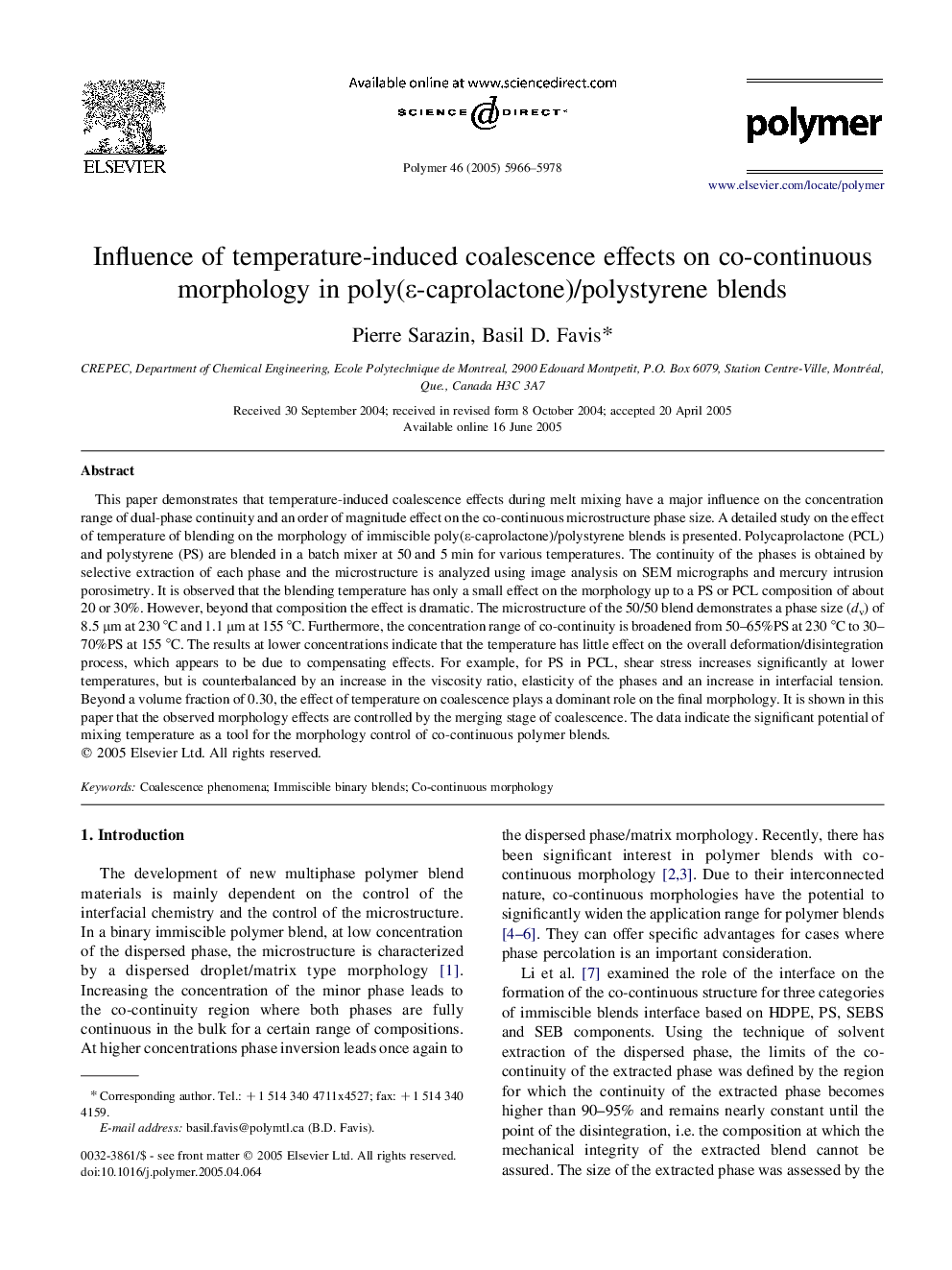| کد مقاله | کد نشریه | سال انتشار | مقاله انگلیسی | نسخه تمام متن |
|---|---|---|---|---|
| 5191450 | 1381232 | 2005 | 13 صفحه PDF | دانلود رایگان |
عنوان انگلیسی مقاله ISI
Influence of temperature-induced coalescence effects on co-continuous morphology in poly(ε-caprolactone)/polystyrene blends
دانلود مقاله + سفارش ترجمه
دانلود مقاله ISI انگلیسی
رایگان برای ایرانیان
موضوعات مرتبط
مهندسی و علوم پایه
شیمی
شیمی آلی
پیش نمایش صفحه اول مقاله

چکیده انگلیسی
This paper demonstrates that temperature-induced coalescence effects during melt mixing have a major influence on the concentration range of dual-phase continuity and an order of magnitude effect on the co-continuous microstructure phase size. A detailed study on the effect of temperature of blending on the morphology of immiscible poly(ε-caprolactone)/polystyrene blends is presented. Polycaprolactone (PCL) and polystyrene (PS) are blended in a batch mixer at 50 and 5 min for various temperatures. The continuity of the phases is obtained by selective extraction of each phase and the microstructure is analyzed using image analysis on SEM micrographs and mercury intrusion porosimetry. It is observed that the blending temperature has only a small effect on the morphology up to a PS or PCL composition of about 20 or 30%. However, beyond that composition the effect is dramatic. The microstructure of the 50/50 blend demonstrates a phase size (dv) of 8.5 μm at 230 °C and 1.1 μm at 155 °C. Furthermore, the concentration range of co-continuity is broadened from 50-65%PS at 230 °C to 30-70%PS at 155 °C. The results at lower concentrations indicate that the temperature has little effect on the overall deformation/disintegration process, which appears to be due to compensating effects. For example, for PS in PCL, shear stress increases significantly at lower temperatures, but is counterbalanced by an increase in the viscosity ratio, elasticity of the phases and an increase in interfacial tension. Beyond a volume fraction of 0.30, the effect of temperature on coalescence plays a dominant role on the final morphology. It is shown in this paper that the observed morphology effects are controlled by the merging stage of coalescence. The data indicate the significant potential of mixing temperature as a tool for the morphology control of co-continuous polymer blends.
ناشر
Database: Elsevier - ScienceDirect (ساینس دایرکت)
Journal: Polymer - Volume 46, Issue 16, 25 July 2005, Pages 5966-5978
Journal: Polymer - Volume 46, Issue 16, 25 July 2005, Pages 5966-5978
نویسندگان
Pierre Sarazin, Basil D. Favis,